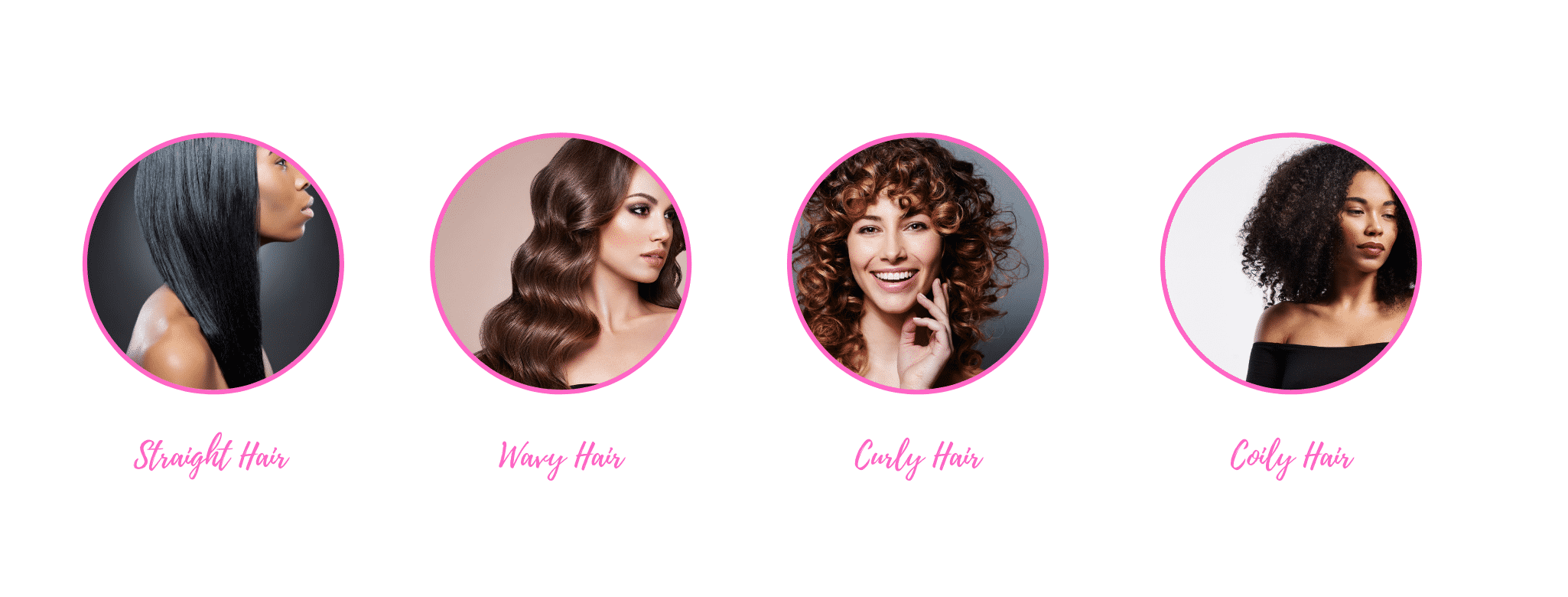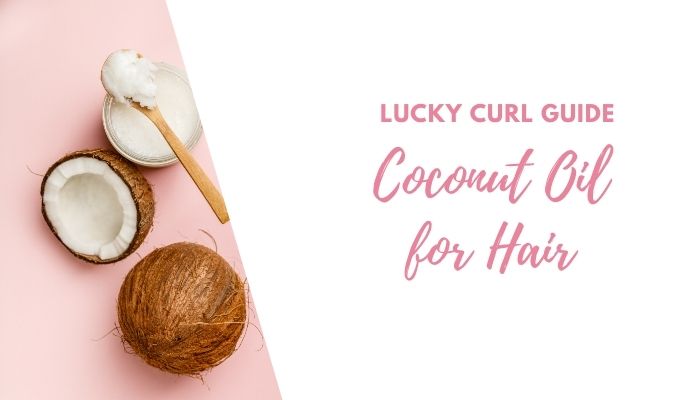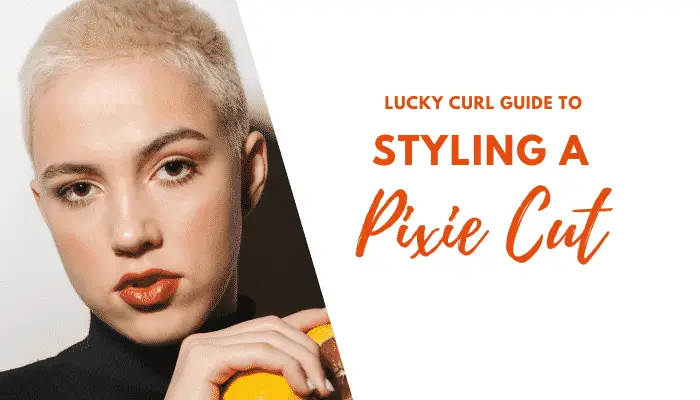As a professional hair stylist, I have observed many clients not understand their hair type. This has led them to buy the wrong products and style it in ways that could damage their beautiful natural hair. Understanding your actual hair type allows you to find the hair care products and styling tools that will work best.
With that in mind, I have put together the ultimate guide to help you discover your hair type. I cover everything from curl patterns, texture and hair porosity. Reading this guide and understanding your actual hair type, will set you up for success when it comes to healthy, lustrous locks.
What Does Hair Type Mean?
Hair type can be determined depending on the curl pattern of your hair. How curly your hair is will depend on the shape of the hair strand’s follicle. There are four types of hair and these are straight, wavy, curly, and coily. Each type hair has its own styling and caring requirements which is why it is important that you know what your curl pattern is.
Discover Your Hair Type
Like it was mentioned before, each type of hair has its own set of styling and caring methods which I didn’t consider before. I just learned that it does pay to know what type of hair you have especially when buying styling products. So, let’s get started.
What are the 4 Hair Types?
 Type 1: Straight
Type 1: Straight
Straight hair is characterized by having a flat hair strand from the root to the tips. You will notice that the texture tends to be soft and smooth, but will produce more oil on the scalp.
Since straight hair tends to produce more oil, you will have to wash it regularly. Using volumizing shampoos and conditioners can give your strands an extra lift. When blow-drying your mane, flip it upside down then use a round brush to lift at the roots.
Type 2: Wavy Hair
When you say wavy hair, it typically falls between straight and curly. You will notice that your hair will have that slight curl at the ends.
- Type 2A – Thin, wavy strands.
- Type 2B – Wavy hair that has medium thickness.
- Type 2C – Thick, wavy hair.
Wavy hair tends to have frizz to them which is why shampoos and conditioners with hydrating properties are recommended. To style your wavy hair, apply a small amount of mousse from the roots of the strands to the tips. You can control frizz and lock moisture by applying some oil from the mid-shaft to the tips.
Type 3: Curly Hair
Take a peek at your hair strand and see if it forms an S curl. This type of hair remains curly even when you try to straighten it out. It does have a tendency to become frizzy or get tangled even.
- Type 3A – This is best described as having loose curls.
- Type 3B – This type of hair tends to have medium curls.
- Type 3C – Curls tend to be tight.
Frizz is just one of the problems that you have to face when your hair is curly, but you can tone it down by keeping your strands moisturized. Look for hair products that are formulated for curly strands as much as possible. Apply a light mousse on your hair to help maintain your curls.
Type 4: Coily Hair
This hair type has a Z pattern to its strands. It does appear to be rough and coarse to the touch. You will find that it has very tight curls to it.
- Type 4A – Soft texture.
- Type 4B – Wiry coils.
- Type 4C – Extremely wiry.
Coily hair needs plenty of moisture so look for a shampoo designed for curly hair and apply heavy conditioner afterward. Towel dry your hair after you take a bath to remove excess water. Apply conditioner after.
Hair Diameter
Hair diameter speaks about the width of each hair strand. You can test the width of your strand by holding it between your forefinger and your thumb.
- Fine – Fine hair is best described as not feeling your hair strand between your fingers.
- Medium – If you can feel your hair a bit between your fingers then you have medium hair.
- Thick – Being able to distinctly feel your hair means that your hair strand is thick.
Hair Texture
Hair texture is more on the circumference of your strands with each type having its own distinct characteristics.
- Fine – This is the most fragile of the three and has a tendency to get oily quickly. If you find your hair tends to be oily, it may be that you have fine hair strands.
- Medium – Most people have a medium texture for their hair which means that they can hold their style easily.
- Coarse – This gives you the appearance of a full head of hair. It can resist high temperatures but can take a while before it dries and can become frizzy when the weather is humid.
Hair Porosity
Hair porosity simply refers to how much moisture your hair strand can hold. If your hair has high porosity levels, the more moisture it can easily hold and even absorb styling products that you are using. Too much porosity can lead to damage as well. Fortunately, testing your hair’s porosity is possible by placing a strand of your hair in a cup that contains water.
- High Porosity – Place your hair strand in a cup of water. If it sinks all the way down to the bottom it means that your hair absorbs too much moisture which makes it prone to damage. Your hair will become prone to frizz and dryness too.
- Normal Porosity – If your hair strand remains in the middle of the cup of water, it means that you have normal porosity. Basically, it means that your hair can balance the amount of moisture that it absorbs. You will notice that your hair won’t have that sticky feeling after washing, plus it can hold your style easily. With this level of porosity, your mane won’t be prone to breakage.
- Low Porosity – Hair that is low in porosity can be easily determined if your strand remains on the top of the water. What this means is that any product that you apply will not be absorbed quickly. When you wash your hair, it will take a while before it dries up and it will also have that sticky feeling to it.
Hair Greasiness
Determining how greasy your hair is can be useful in knowing how often you should wash your hair. This can also tell you what type of hair products will be appropriate for your mane too. To find out the level of greasiness of your hair, wash your hair first and let it air dry before heading to bed. In the morning, press a tissue on your scalp, specifically near the crown of the head as well as behind your ears. How much oil is absorbed by the tissue will tell you how greasy your strands are.
- Dry – Dry tissue means that your scalp isn’t producing much oil hence your hair needs constant hydration. You will need to use products that can add and lock in moisture on your hair and scalp.
- Normal – If there is light amount of oil on you the tissue, it is a good indication that you have normal greasiness. Washing can be done once or twice a week.
- Oily – A greasy patch on the tissue means that your scalp is loaded with oil. This also means that you will have to wash your hair 4 to 5 times in a week.
- Combination – If you notice that the oil on the tissue are on certain parts of your scalp, it may mean that you have combination hair.
Scalp Moisture
Scalps can vary from one person to the next. Knowing what type of scalp you have can help you determine what type of hair products will work best with you. Ther are two things that determine what kind of scalp you have and these are pH balance and how much oil your scalp produces. When you say pH balance, it determines whether your scalp has too much acid or alkaline in it. The right levels should be at 4.5 to 5 pH. How much oil your scalp produces can also determine how healthy your scalp will be.
- Dry – Dry scalp with bits of flakes can mean that your scalp is not producing enough oils or that your pH balance is way too high. This must be treated by applying essential oils in moderation to help encourage oil production on the scalp. It would help if you shampoo your hair regularly and comb afterwards to help with oil production.
- Oily – For those whose hair strands tend to clump together and has that greasy feel to it, you will most likely have oily scalp. On a good note, it means that your locks will be naturally moisturized so less damage and frizz. Look for hair products that are labeled as strengthening or balancing to it. Apply it on your hair and scalp and massage it a bit on your hair to let the scalp absorb the product.
- Normal – Normal scalp will have bouts of dryness and oiliness depending on the current weather. You can leave it as is, but it would be better if you apply sunscreen for hair and scalp and moisturize it from time to time.
Hair Density

This refers on how much hair is present on your scalp. This is quite different from hair diameter so as not to be confused. It is possible that you have fine hair with more density or the other way around. You can determine your hair density by pulling a section of your hair to see how much scalp you can see.
- Thin – If you have pulled one section of your hair and you can easily see your scalp, it means that you have thin density.
- Medium – If you can see a partial amount of scalp when you section your hair, then you have medium density.
- Thick – On the other hand, if you cannot see or barely see your scalp, then you have thick dense hair.
Hair Elasticity
With regards to hair elasticity, it refers to how much your hair strand can extend itself before returning to its normal shape. This is actually a good way to determine whether your hair is healthy or not. How will you know your hair’s density. Get a strand of wet hair from your head and pull at it from opposite ends.
- High – If you have managed to stretch your hair out without breaking immediately, it means that your hair strand has high elasticity. This is a good indication that you have a healthy hair. Coarse hair tends to be quite elastic meaning that it won’t be prone to breakage immediately.
- Medium – On the other hand, if your hair strand manages to extend itself but broke afterward, it can mean that you have medium elasticity. Women tend to fall under this category.
- Low – If your hair snaps as you stretch it out, it means that your hair has low elasticity levels. Low elasticity means that you will need to be careful with your hair products since your mane will be a bit brittle and prone to breakage.
Final Thoughts
Who would have thought that knowing what your hair type is can involve a lot of things? After reading up on these factors, I felt that my hair and I understand each better. Yes, you may find that odd, but as with anything about your body, knowing what works for it and what doesn’t can help you choose better when buying things such as hair products and styling tools.
From what I have learned, my hair falls in the wavy spectrum with thick density and normal greasiness. That said, I can now determine what products will work best for me and what styling tools I can use. I will no longer have to deal with dry and brittle hair because of too much use of styling products. I can already imagine the fun that I will get to styling and caring for my hair now that I know my hair type. You should try to figure out yours as well.



